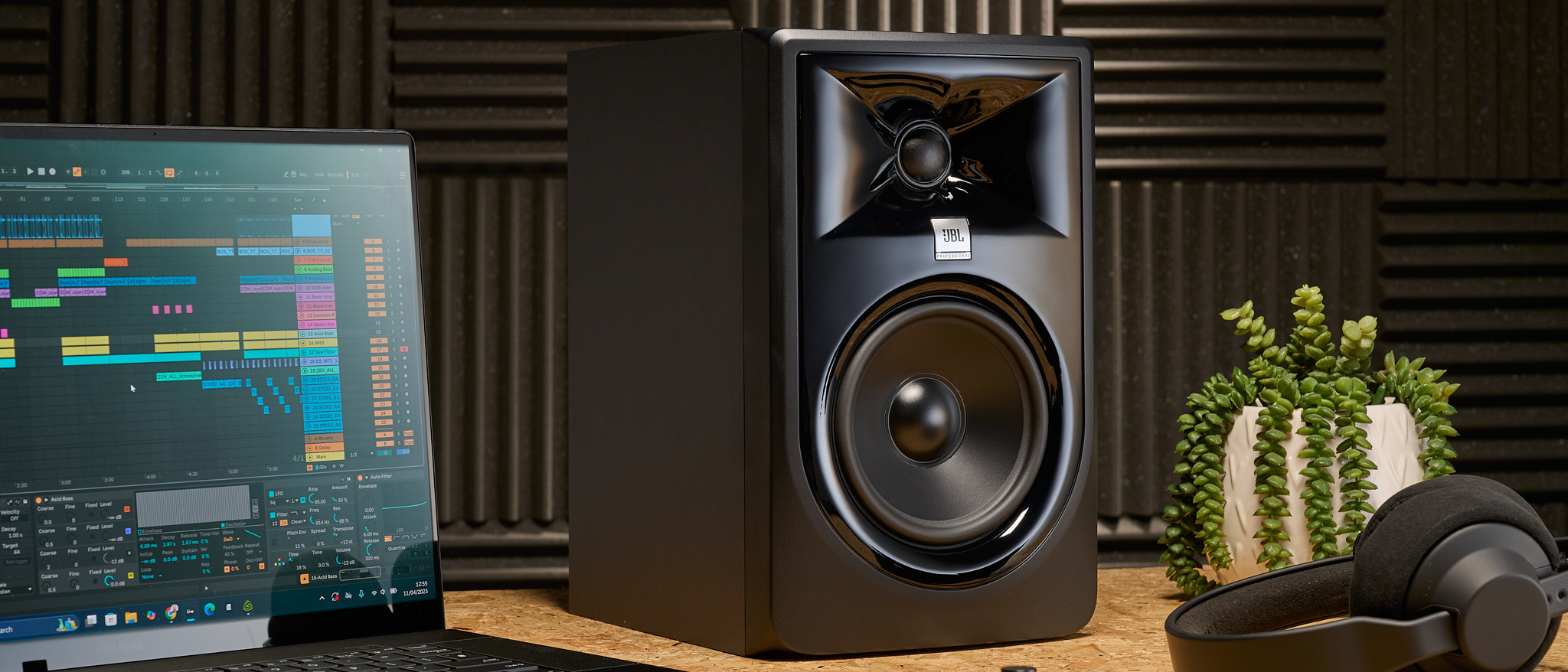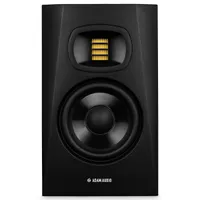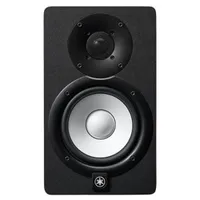MusicRadar Verdict
Overall, I was hugely impressed with the performance of these budget studio monitors, especially considering the price. Yes, they’re a little flattering, but if you’re looking for a beginner studio monitor I don’t necessarily think that’s a bad thing as it lets you hone your ear without being too unforgiving.
Pros
- +
Delivers a nice amount of low-end.
- +
Superb value for money.
- +
Clear and articulate sound.
- +
Useful EQ settings on the rear.
Cons
- -
Auto power off didn’t work properly.
- -
A little more flattering than some other options.
MusicRadar's got your back
What is it?
Coming in at a mere £115/$159 for a single studio monitor, the JBL 305P MkIIs are a tempting option for the beginner mix engineer looking to get their first set of ‘proper’ monitors. The question is though, are they actually any good for mixing music?
For a pair they’re considerably cheaper than many of the other options from Adam Audio, M-Audio, and Kali Audio, so intrigued, and more than a little sceptical, I installed a pair into my home studio to see how they hold up against the more expensive Yamaha HS5s I normally use.
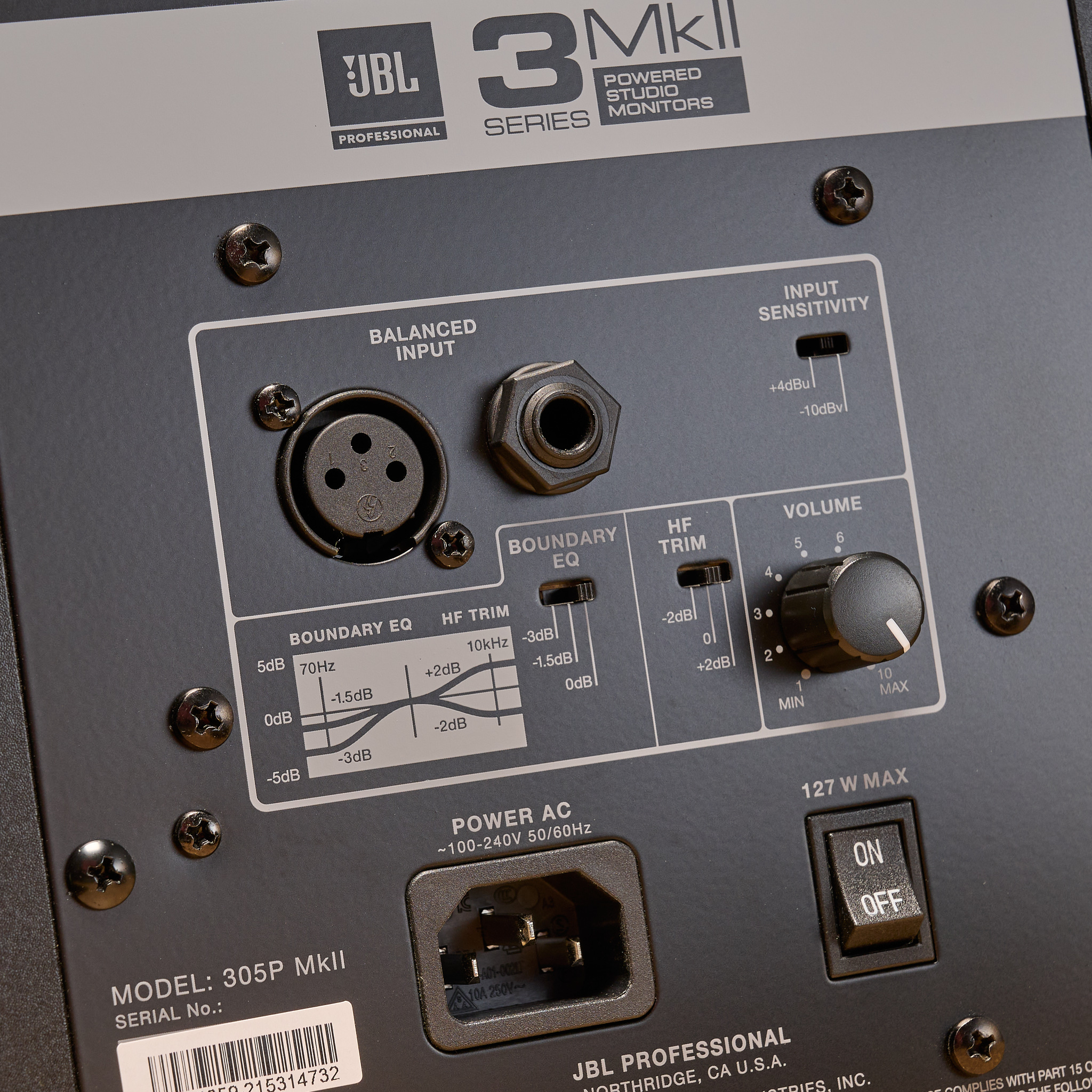
The 305Ps feature 5-inch woofers with 1-inch soft dome tweeters embedded in an image control waveguide designed to give a broader sweet spot. The front panel is predominantly glossy black with a small grey logo that houses the power light to let you know they’re on. They’re quite wide too, with the edges hanging off each side of my isolation pads once I got them positioned on my studio desk.
Moving to the back panel you’ve got a bass port, XLR and 1/4-inch balanced inputs, as well as a power switch and classic ‘kettle’ style power input. In terms of controls you’ve got an input sensitivity switch for moving between consumer devices and pro gear, a boundary EQ to help aid low end build up when placed near walls, and a HF Trim for adjusting to the sound of your room. It’s a pretty standard offering from the modern studio monitors, but useful nonetheless.
Performance
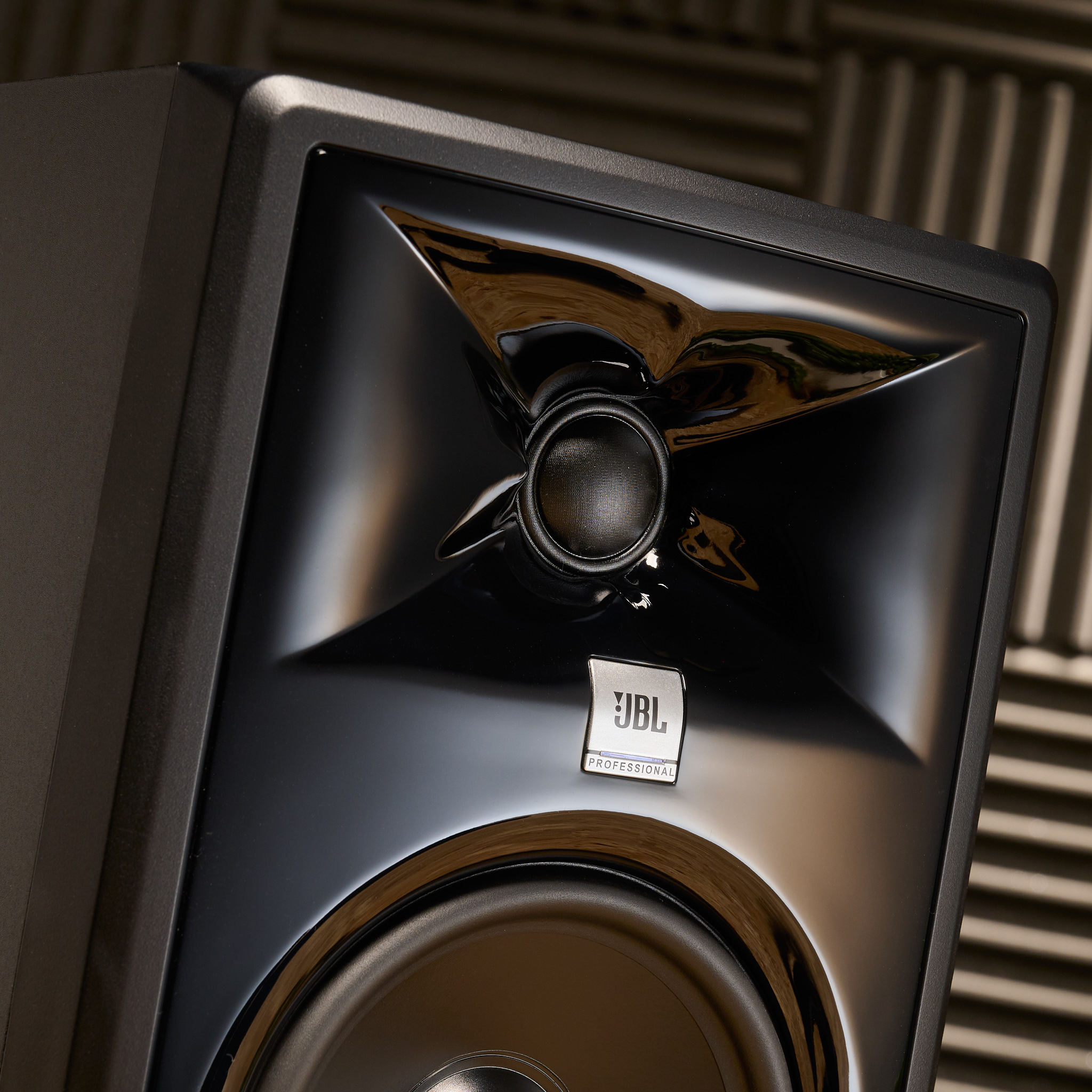
Getting the JBL 305Ps set up in my home studio alongside my UA audio interface, I begin my testing by playing some of my favourite mixes from 2025, including Viagra Boys’ ‘Man Made of Meat’, ‘S.U’ by IDK and Denzel Curry for some low-end oomph, ‘Razor’ by ECHT! for synth sounds, and ‘Never Enough’ from the upcoming Turnstile LP for something that blends traditional instrumentation with digital.
My initial assessment is that the 305Ps are surprisingly more bassy than I expect, especially compared to my HS5s which are typically pretty light in that area. It’s not overpowering, but I definitely notice more low-end coming through than usual. They’re nicely balanced across the rest of the frequency spectrum, not quite as bright as the HS5s in the top end though.
The stereo imaging is really nice, making the panning of toms on the latest production I’m working on really move across the stereo field. Ditto with the Hendrix-inspired panning of guitar licks going from one side to another. It makes them really good for checking how hard-panned guitars are sitting with one another too, letting me get a nice balance of differing tones for extra width in the mix.
Want all the hottest music and gear news, reviews, deals, features and more, direct to your inbox? Sign up here.
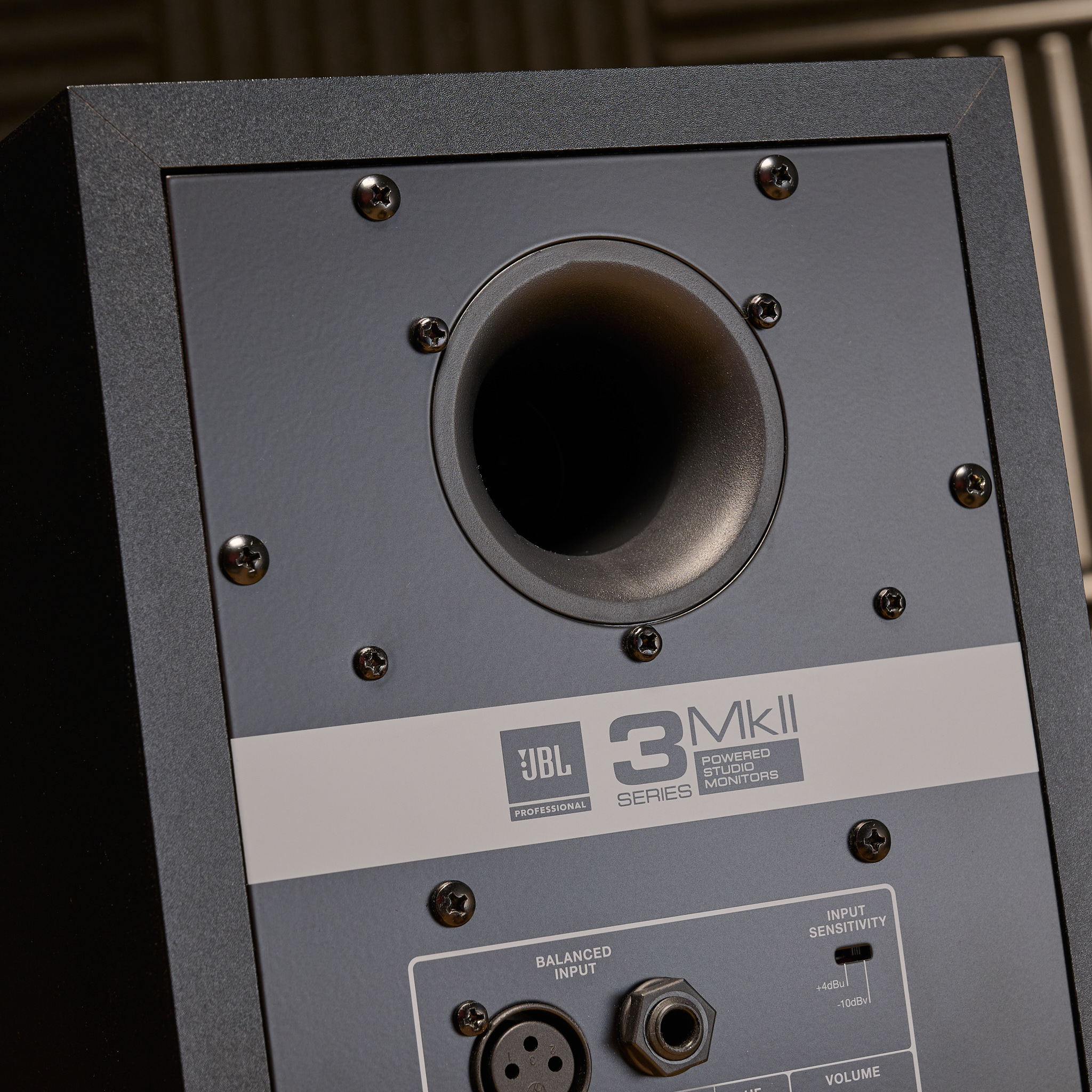
One thing I find annoying with these monitors is the auto power-off feature. An auto power off is something I’d actually find pretty useful, as I tend to leave my monitors on all day, but unfortunately, here it just doesn’t work that well. The monitors turn off fine after you leave them for twenty minutes, but getting them to turn back on just doesn’t seem to work for me.
Occasionally it works when it detects signal from the speakers, but for the most part I get either no response at all, or just one speaker - usually the left channel for some reason - comes back on. I then have to switch them off using the power switch at the back, and even then that gives me problems a few times with the speaker just not coming back on. After trying to get it to work for half a day, I just decide to turn the feature off entirely following the process in the manual, and my experience is much better from that point.
Verdict

You can absolutely craft some great mixes on these in a well-treated room, and they could double as a good set of consumer speakers if you wanted to hook them up to a vinyl player or home sound system. For beginners or those looking for a budget set of monitors, I think these are an excellent choice, for experienced mixers they might not be quite as neutral as you need.
MusicRadar verdict: Overall, I was hugely impressed with the performance of these budget studio monitors, especially considering the price. Yes, they’re a little flattering, but if you’re looking for a beginner studio monitor I don’t necessarily think that’s a bad thing as it lets you hone your ear without being too unforgiving. For the money, it's hard to find too much to fault here.
Hands-on videos
Alternatives
Another low-cost option for your monitoring needs, the LP-6 V2s are well worth a look if you need a budget studio monitor.
Read the full Kali Audio LP-6 V2 review
If you’ve got a little more cash to spend but still want to keep things relatively low cost, the Adam Audio T5Vs deliver superb sound quality thanks to their ribbon tweeter.
Read the full Adam Audio T5V review
One of the OGs of the humble home studio, Yamaha HS5s are renowned for their unflinching representation of your mix, allowing you to hear (and correct) every fine detail.
Read the full Yamaha HS5 review
Specs
Launch price | $159 | €135 | £115 |
Key features: | Powered: Yes Power Configuration: Bi-amped Quantity: Single LF Driver Size: 5" woofer LF Driver Type: Cone HF Driver Size: 1" tweeter HF Driver Type: Soft dome LF Driver Power Amp: 41W HF Driver Power Amp: 41W Total Power: 82W Class D Frequency Range: 43Hz-24kHz Frequency Response: 49Hz-20kHz (±3dB), 43Hz-24kHz (-10dB) Crossover Frequency: 1725Hz Maximum Peak SPL: 108 dB SPL Input Types: 1 x XLR, 1 x 1/4" Enclosure Type: Rear Ported Enclosure Material: 15mm Medium-Density Fiberboard Power Source: Standard IEC AC cable |
Dimensions: | 29.7 (H) x 18.5 (W) x 23.1 (D) cm |
Weight: | 4.7 kg |
Contact |

Matt is a Junior Deals Writer here at MusicRadar. He regularly tests and reviews music gear with a focus on audio interfaces, studio headphones, studio monitors, and pretty much anything else recording-related. Matt worked in music retail for 5 years at Dawsons Music and Northwest Guitars and has written for various music sites including Guitar World, Guitar Player, Guitar.com, Ultimate Guitar, and Thomann’s t.blog. A regularly gigging guitarist with over 20 years of experience playing live and producing bands, he's also an alumnus of Spirit Studios, where he studied studio engineering and music production.
You must confirm your public display name before commenting
Please logout and then login again, you will then be prompted to enter your display name.
